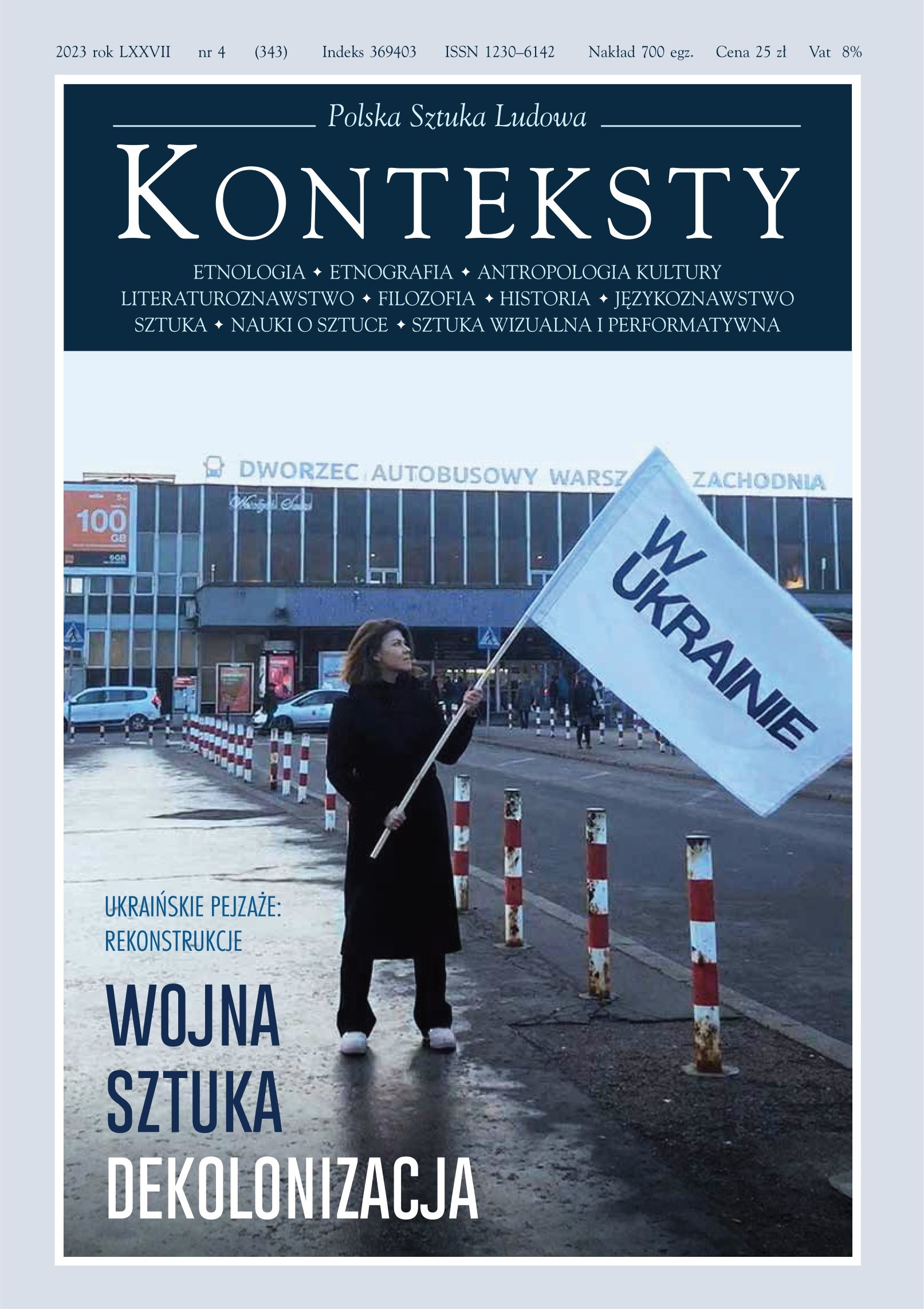Job’s News
The Suffering and the Drama of Creation
Dariusz Czaja
dariusz.czaja61@gmail.comUniwersytet Jagielloński (Poland)
https://orcid.org/0000-0001-8627-1415
Abstract
Those who assume that The Tree of Life (2011), together with its brilliant form and intellectual profoundness, is a sui generis cinematic theological treatise, are right despite the fact that the outstanding work by Terrence Malick is not a philosophical dissertation conducted by means of the language of discourse and with the assistance of logical argumentation. It is, above all, a film composed of intriguing images that with difficulty submit to being named, summarised, and subjected to verbal description, and strongly resist words commenting them. Nonetheless, in its intention, surpassing a story from the life of an average American family, The Tree of Life poses fundamental theological questions dealing with the appearance of evil in the world, the meaning of human suffering, and, predominantly, the way in which those components of daily experience are connected with a conviction about divine presence. The author of the article presents Malick’s film as a continuation of questions posed by the Biblical Job. In doing so he discloses a more profound intention – one that numerous spectators find shocking - i.e. a correlation within a single image of the American microcosmos and the galactic-size macrocosm. From this perspective the drama of suffering becomes closely connected with the drama of creation. Finally, it turns out that the mystery of suffering does not possess a juridic nature (who is guilty?) but a cosmogonic (who is the creator?) and an ontological one (what, in fact, is creation?).
Keywords:
film, theology, theodicy, Hiob, BibleReferences
Barnett Ch. B., Spirit(uality) in the Films of Terrence Malick, „Journal of Religion and Film”, vol. 17-33.
Google Scholar
Ebert R., A Prayer Beneath The Tree of Life, Los Angeles 2010 (booklet dołączony do wersji reżyserskiej filmu).
Google Scholar
Eliade M., Traktat o historii religii, przeł. A. Wierusz-Kowalski, Warszawa 1966.
Google Scholar
Gadamer H.-G., Aktualność piękna. Sztuka jako gra, symbol i święto, przeł. K. Krzemieniowa, Warszawa 1993
Google Scholar
Glück L., Dziki irys, przeł. K. Piotrowska, Kraków 2024.
Google Scholar
Guardini R., Objawienie. Natura i formy objawienia, przeł. A. Paygert, Warszawa 1957.
Google Scholar
Jaspers K., Filozofia egzystencji, przeł. D. Lachowska, A. Wołkowicz, Warszawa 1990.
Google Scholar
Jonas H., Idea Boga po Auschwitz, przeł. G. Sowinski, Kraków 2003.
Google Scholar
Jones K., Let the Wind Speak, Los Angeles 2010, s. 34 (booklet dołączony do wersji reżyserskiej filmu).
Google Scholar
Jung C. G., Odpowiedź Hiobowi, przeł. J. Prokopiuk, Warszawa 1995.
Google Scholar
Kierkegaard S., Powtórzenie. Próba psychologii eksperymentalnej przez Constantina Constantinusa, przeł. B. Świderski, Warszawa 1992.
Google Scholar
Koç E. E., The Theodicy of Suffering and the Cosmic Voyages in The Tree of Life and Miracles from Heaven, „Dokuz Eylül Üniversitesi Sosyal Bilimler Enstitüsü Dergisi”, 23 (1): 2021.
DOI: https://doi.org/10.16953/deusosbil.776647
Google Scholar
Księga Hioba, przeł. Cz. Miłosz, Lublin 1981.
Google Scholar
Lacocque A., Ricoeur P., Myśleć biblijnie, przeł. E. Mukoid, M. Tarnowska, Kraków 2003.
Google Scholar
Sadzik J., Przesłanie Hioba, w: Księga Hioba, przeł. Cz. Miłosz, Lublin 1981.
Google Scholar
Steiner G., Real Presences, Chicago 1989.
Google Scholar
Steiner G., Gramatyki tworzenia, przeł. J. Łoziński, Poznań 2004.
Google Scholar
Ward K., Bóg. Przewodnik dla błądzących, przeł. J. Karłowicz, Poznań 2006
Google Scholar
Authors
Dariusz Czajadariusz.czaja61@gmail.com
Uniwersytet Jagielloński Poland
https://orcid.org/0000-0001-8627-1415
Dariusz Czaja – antropolog kultury, b. redaktor kwartalnika „Konteksty”, eseista, recenzent muzyczny. Prof. dr hab., wykładowca w Instytucie Etnologii i Antropologii Kulturowej UJ. Opublikował m. in.: Gdzieś dalej, gdzie indziej (2010 – nagroda „Warszawska Premiera Literacka” 2011, nominacja do Nagrody „Nike”); Znaki szczególne. Antropologia jako ćwiczenie duchowe (2013); Inne przestrzenie, inne miejsca. Mapy i terytoria (red., 2013); Kwintesencje. Pasaże barokowe (2014), Scenariusze Końca. Zmierzch, kres, apokalipsa (red., 2015), Negde dalje, negde drugde (Belgrad, 2016), Ruiny czasu. Rozmowy o twórczości (2016), Gramatyka bieli. Antropologia doświadczeń granicznych (2018) – nominacja do nagrody „Nike”, Cena sztuki. Tezy o zaczarowaniu (2020), Blask ciemnieje. Lektury hermeneutyczne (2021), Szczeliny czasu. Reminiscencje, repetycje (2022).
Statistics
Abstract views: 796PDF downloads: 320
License
Copyright (c) 2025 Dariusz Czaja

This work is licensed under a Creative Commons Attribution 4.0 International License.
Most read articles by the same author(s)
- Magdalena Barbaruk, Dariusz Czaja, Italian journey, today , Konteksty: Vol. 342 No. 3 (2023): Italian Landscapes: Decontructions
- Dariusz Czaja, Do You Know the Land Where the Lemons Blossom? , Konteksty: Vol. 342 No. 3 (2023): Italian Landscapes: Decontructions
- Dariusz Czaja, Isola del Giglio , Konteksty: Vol. 342 No. 3 (2023): Italian Landscapes: Decontructions
- Dariusz Czaja, “I Am Unprepared, but I Am Ready”. Voices from the Death Chamber , Konteksty: Vol. 346 No. 3 (2024): Aktualność muzeum / XIII Zakopiańskie Spotkania Antropologiczne







